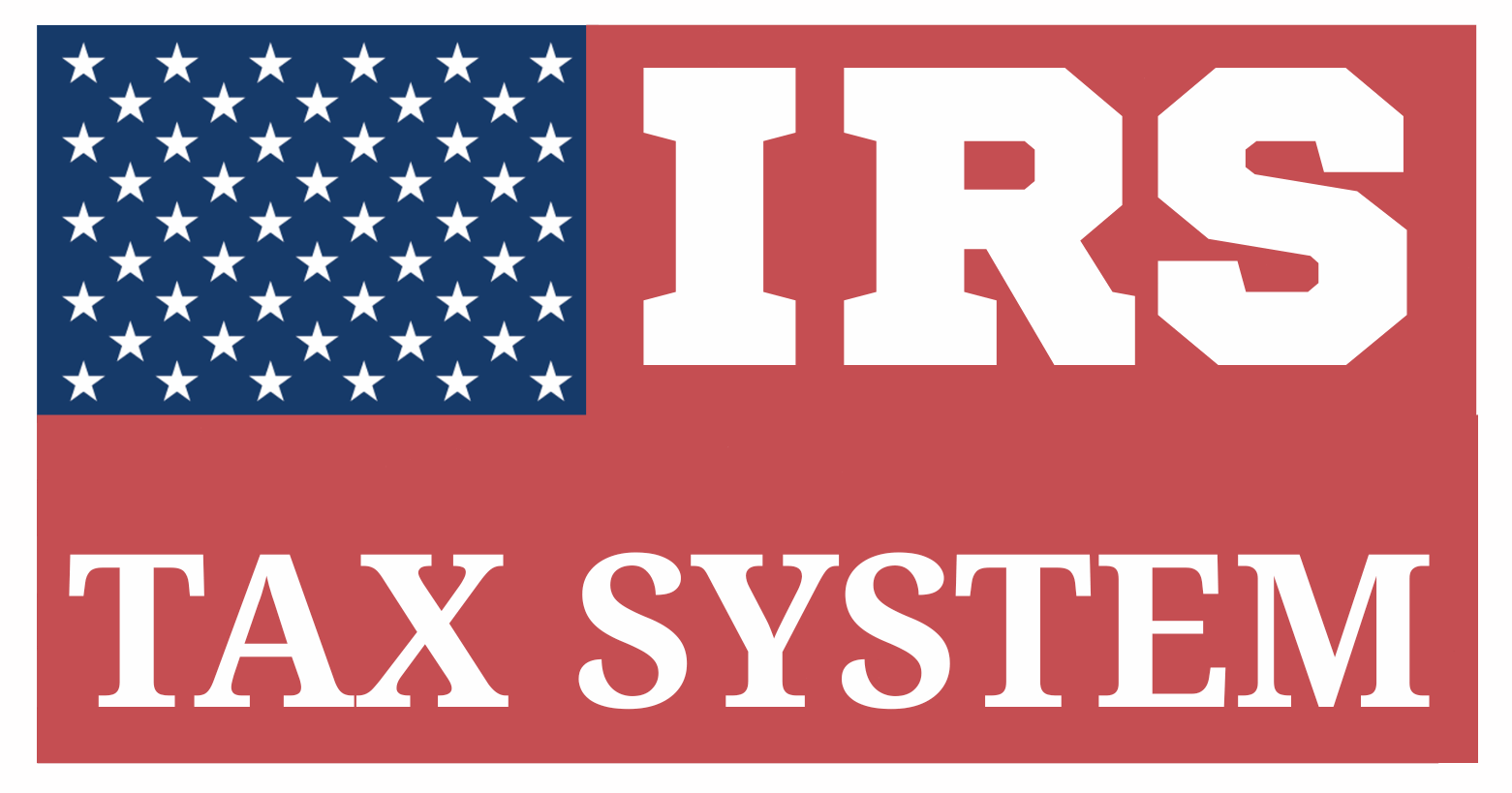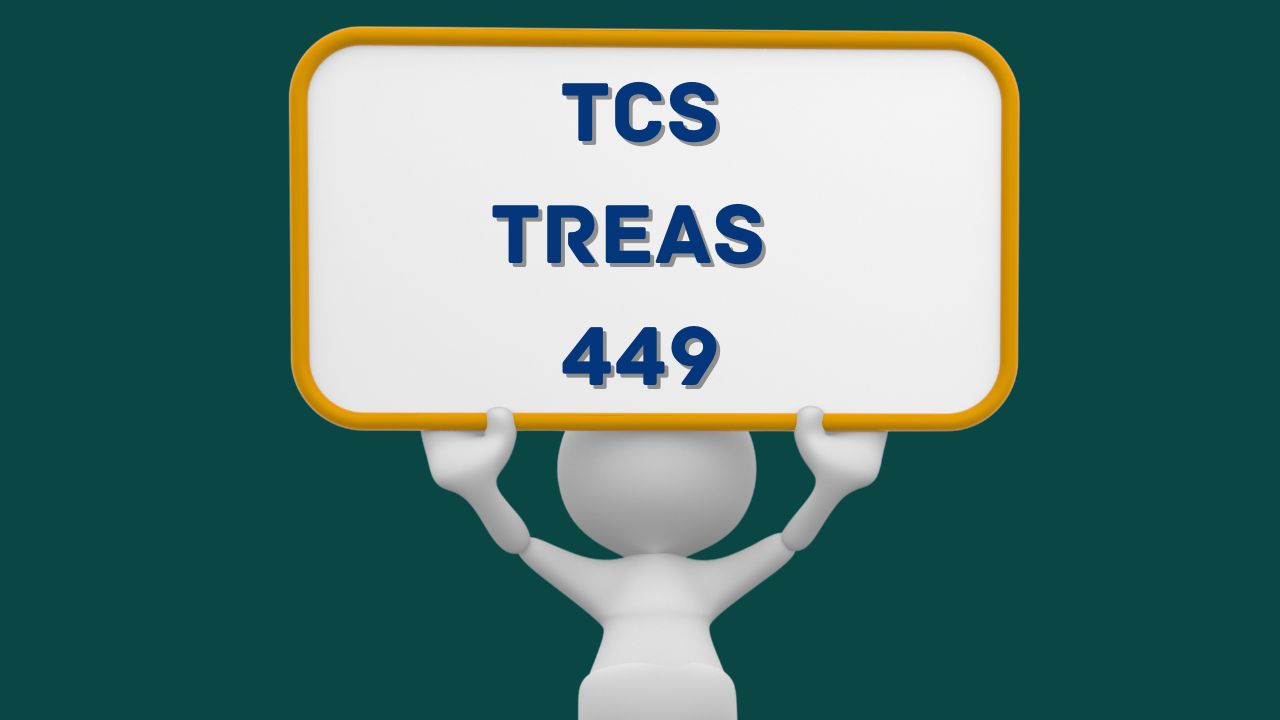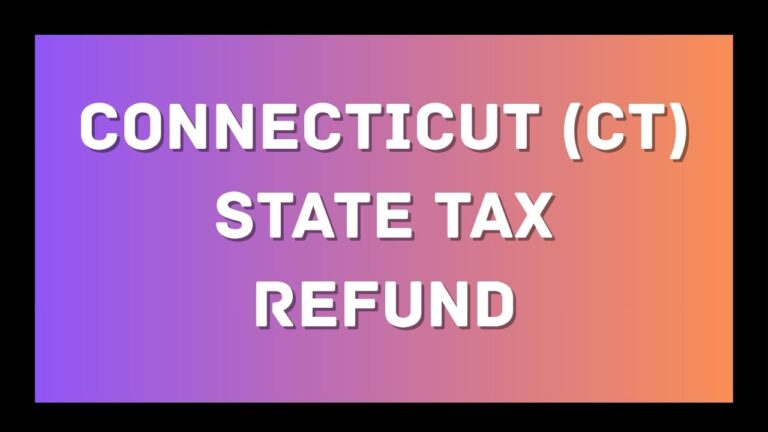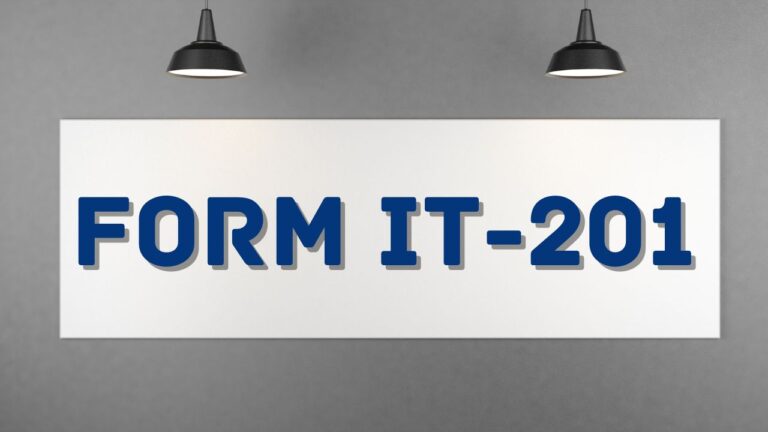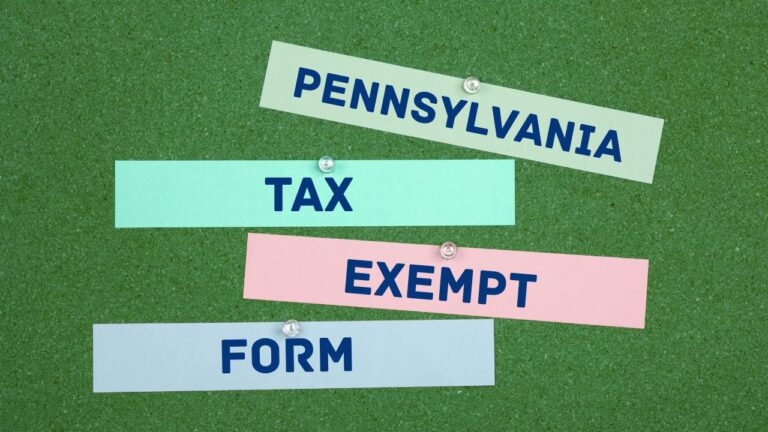TCS Treas 449: Unlock The Amazing Guide
Table of Contents
Detailed Breakdown Of TCS Treas 449

TCS Treas 449 is a transaction code that appears on IRS tax transcripts and other forms of taxpayer correspondence. It signifies that a portion or the entirety of a taxpayer’s federal tax refund has been offset (withheld) by the U.S. Department of Treasury’s Bureau of the Fiscal Service (BFS) through the Treasury Offset Program (TOP). The code is typically listed as:
Code: 449
Explanation: “Refund Offset for Financial Management Service” (FMS)
While the code often appears as “TCS TREAS 449” or “TOP Offset”, its actual meaning points to the reduction or seizure of your tax refund to pay outstanding federal or state debts.
What Does “TCS TREAS 449” Mean?
- TCS stands for the Collection System operated under the Treasury Offset Program to recover delinquent federal and state debts.
- TREAS stands for the U.S. Department of the Treasury.
- 449 is the IRS transaction code for refund offset.
The presence of TCS TREAS 449 on your transcript or notice means that your refund was intercepted by the Treasury and applied to a debt you owe to a government agency.
Common Debts That Trigger a TCS TREAS 449 Offset
IRS transcripts may show the TCS TREAS 449 code when the Treasury Offset Program has applied part or all of your federal refund to a delinquent debt. The offset can occur for a wide range of unpaid obligations owed to federal or state agencies, and these debts are legally eligible for collection through your tax refund under the Debt Collection Improvement Act.
Below are the most common types of debts that can result in a TCS TREAS 449 refund offset:
1. Past-Due Federal Student Loans
If you have defaulted on federal student loans (e.g., Direct Loans or loans issued by the Department of Education), your tax refund may be seized to repay the outstanding balance. Even if the loan is in a paused or deferred status, prior defaults may still trigger an offset if the debt has been referred for collection.
2. Unpaid Child Support Obligations
Delinquent child support is one of the most common causes of federal tax refund offsets. State child support enforcement agencies report unpaid support balances to the U.S. Treasury, which then redirects the tax refund to cover the overdue amount.
3. Overpaid Unemployment Compensation (State Level)
If you received unemployment benefits in excess of what you were eligible for—either due to fraud or unintentional errors—state labor departments may seek repayment via a refund offset. These debts are frequently sent to the Treasury for federal collection.
4. State Income Tax Debts
Taxpayers who owe back taxes to state revenue agencies may have their federal refunds garnished to pay off those liabilities. Many states participate in the Treasury Offset Program, especially if the debt is certified as legally enforceable and past due.
5. Federal Agency Debts
Any debt owed to a federal agency—such as the Department of Housing and Urban Development (HUD), the Small Business Administration (SBA), or Veterans Affairs (VA)—can trigger a refund offset if the debt has become delinquent and is referred for Treasury collection.
Examples include:
- Defaulted SBA disaster loans
- HUD-insured mortgage deficiencies
- Overpayments of federal benefits (e.g., SNAP, Medicare, SSI)
6. Court-Ordered Restitution
If you have been ordered by a federal court to pay restitution (such as in criminal or civil proceedings), the balance may be recovered through your tax refund under the authority of the U.S. Department of Justice.
7. Federal Non-Tax Overpayments
These include overpayments of federal retirement benefits (such as from OPM), or Social Security overpayments where benefits were paid in excess due to income misreporting or eligibility errors.
8. Delinquent Federal Taxes (Separate from Regular Offsets)
While most refund reductions for back federal taxes are handled directly by the IRS using Code 898, some federal debts collected via TCS 449 may include additional assessments or enforcement referrals.
Additional Notes:
- Refunds from joint tax returns can be offset even if only one spouse is responsible for the debt. The non-responsible spouse, known as the “injured spouse,” can file IRS Form 8379 to reclaim their portion of the joint refund.
- Offsets are often accompanied by a letter from the Bureau of the Fiscal Service (BFS), identifying the agency that requested the offset, the reason, and the contact information to resolve the debt.
- The offset amount may be partial or total, depending on the size of your refund and the amount owed.
Where You Might See TCS TREAS 449
The TCS TREAS 449 code most commonly appears in the following places during the tax refund process and communication from the IRS or U.S. Treasury:
1. IRS Tax Transcript
One of the most direct places where you’ll see the TCS TREAS 449 code is on your IRS account transcript—specifically under the “Transaction Codes” section. It will usually appear as:
- Code 898: Offset to Treasury
- Code 846: Refund issued (adjusted)
- You may see a code such as “TCS TREAS 449” or “BFS Offset” showing that you
2. Refund Status via IRS “Where’s My Refund?” Tool
If you use the IRS’s “Where’s My Refund?” tool to track your refund status portal or IRS2Go mobile app, you may receive a message that says:
“Your federal tax refund was used to pay an outstanding debt you owe”
The IRS does not initially provide full details about the debt but may mention that the Bureau of the Fiscal Service (BFS) has taken action. This is typically the first indication that a TCS TREAS 449 offset has occurred.
3. Notice or Letter from the Bureau of the Fiscal Service (BFS)
After the offset is applied, you will usually receive a formal notice from the BFS, not the IRS. This letter provides:
- The exact amount offset from your refund
- The agency requesting the offset
- The reason for the offset (e.g., child support, student loan)
- Contact information to dispute or resolve the issue
This document is often titled “Notice of Offset” and arrives by mail shortly after the IRS processes your return.
4. IRS Refund Adjustments on Form 1040
If the IRS adjusts your refund amount due to the offset, this change will be reflected in:
- Form 1040 processing details
- Corresponding schedules or summary pages included with your tax filing (if you filed electronically)
5. Direct Deposit or Treasury Check
If your refund is directly deposited into your bank account or sent by check, the amount may be less than expected. The reason for the lower refund amount could be the TCS TREAS 449 offset, especially if no other tax errors are present. You may only realize the offset occurred after comparing your expected vs. actual refund.
How to Confirm a TCS TREAS 449 Offset
If you suspect your federal tax refund was reduced or withheld due to a TCS TREAS 449 offset, you can confirm it using the following methods:
1. Check Your IRS Tax Transcript
One of the most direct ways to confirm an offset is to request and review your IRS account transcript, available via the IRS “Get Transcript” tool. Look for the following:
- Transaction Code 898: “Refund applied to non-IRS debt”
- A reference to “TCS TREAS 449”, indicating the offset was sent through the Treasury Offset Program
- Reduced or zeroed-out refund amount compared to what was expected
Note: Transcripts are often updated before paper notices are mailed.
2. Use the “Where’s My Refund?” Tool
Visit the IRS’s Where’s My Refund? page and enter your:
- Social Security Number (or ITIN)
- Filing status
- Refund amount (as expected)
If your refund is intercepted, the IRS tool might display a notice like: “Your refund has been used to satisfy an outstanding debt.
While it won’t show which agency claimed the offset, this message strongly suggests Treasury intervention.
3. Contact the Treasury Offset Program (TOP)
To get specific details about the offset—such as the agency involved and the amount taken—call the TOP Interactive Voice Response system:
TOP Call Center: 1-800-304-3107
(Representatives are available weekdays from 7:30 a.m. to 5:00 p.m. Central Time)
You’ll need to provide:
- Your Social Security Number
- Basic identity verification (date of birth, etc.)
They will tell you:
- Which agency requested the offset
- How much was taken
- Contact details for resolving the debt
4. Wait for the Bureau of the Fiscal Service (BFS) Notice
If your refund was offset, you should receive a written notice by mail from the Bureau of the Fiscal Service (not the IRS). This official “Offset Notice” will explain:
- The exact amount offset from your refund
- The name of the agency that claimed it
- The reason for the offset
- Contact information for resolving or disputing the debt
If you filed jointly and only one spouse owes the debt, this is also where you’ll find out how to file Form 8379 (Injured Spouse Allocation).
5. Review IRS Correspondence (If Any)
Sometimes the IRS may issue a brief notice (especially when your refund is changed from the expected amount). Though they do not manage the offset, the notice might simply show the adjusted refund amount and refer you to BFS.
Related IRS Forms and Notices for TCS TREAS 449 Offsets
When a federal tax refund is reduced or withheld due to a Treasury Offset Program (TOP) match—often referenced as TCS TREAS 449—several IRS forms and official notices may be involved in reporting, verifying, or correcting the situation.
IRS Forms
1. Form 1040 – U.S. Individual Income Tax Return
- This is the main tax return where your refund is initially calculated.
- If an offset occurs, the refund amount you receive will differ from the refund on Line 35a (2024 version).
- The IRS does not adjust the return itself, but the Treasury will reduce the disbursed refund.
2. Form 8379 – Injured Spouse Allocation
- Relevant when a joint tax return results in an offset because of debts your spouse owes, like past-due support payments or federal loan defaults
- Submitting Form 8379 can help you reclaim the portion of the refund that is rightfully yours.
- Can be filed:
- With your original return, or
- Separately after receiving an offset notice
- Processed in 11–14 weeks if submitted after filing
3. Form 1040-X – Amended U.S. Individual Income Tax Return
- If your return was incorrect and that error contributed to the refund or debt in question, this form allows you to amend the return.
- Not typically required for a TOP offset unless there’s a tax return error related to the amount of refund.
4. IRS Transcript (Request via Get Transcript)
- While not a form, this is an essential IRS document that lets you:
- View refund transactions (e.g., Code 898 – Offset Applied)
- Confirm refund amounts issued vs. offset
- Request online via: IRS Get Transcript
Notices You May Receive
1. Treasury Offset Program Notice (BFS Offset Notice)
- Issued by the Bureau of the Fiscal Service (BFS), not the IRS
- Confirms:
- The amount offset
- Which agency requested the offset
- The reason for the debt
- Contact information for resolution
2. IRS Notice CP49 – Refund Applied to Debt
- If the IRS applied your refund to an IRS-related past-due tax debt (not BFS), you’ll receive Notice CP49.
- Explains how much of your refund was applied and why.
Important Distinction:
- CP49 = IRS Debt Offset
- TCS TREAS 449/BFS Notice = Non-IRS Debt Offset (e.g., student loans, child support)
3. Letter 2644C – Injured Spouse Claim Acknowledgment
- Issued by the IRS to acknowledge receipt of your submitted Form 8379.
- Will include estimated processing time and reference number.
4. IRS Letter 4464C – Refund Review Notice
- Sent if the IRS is reviewing your return before issuing a refund.
- While unrelated to the offset itself, this may delay disbursement, causing confusion with offset notices.
Conclusion: Understanding TCS TREAS 449 Offsets
A TCS TREAS 449 offset indicates that the U.S. Department of the Treasury has intercepted all or part of your federal tax refund to satisfy a delinquent debt, such as unpaid student loans, child support, or federal/state agency obligations. This action is conducted through the Treasury Offset Program (TOP), not the IRS directly.
While alarming at first, this offset is not necessarily a sign of IRS error. It’s a legally authorized process that prioritizes debt recovery. Knowing which forms and notices apply—such as Form 8379 (injured spouse) or the BFS Offset Notice—can help taxpayers verify, challenge, or adjust their refunds as needed.
Understanding your rights, responsibilities, and the tools available to dispute incorrect offsets or recover a portion of your refund is critical. Always retain IRS notices and check your IRS transcript to confirm any refund offsets.
Frequently Asked Questions (FAQs)
What does TCS TREAS 449 mean on my bank statement or IRS transcript?
It means the Bureau of the Fiscal Service (BFS) applied all or part of your federal refund to a debt you (or your spouse, in a joint return) owe to a federal or state agency.
Can the IRS help me get my refund back if it was offset?
No. While the IRS calculates your refund, the Treasury handles the offset through the TOP program. To challenge or settle the debt, reach out directly to the agency named in your Bureau of the Fiscal Service (BFS) notice.
Which types of debts may result in a TCS TREAS 449 refund offset?
Common examples include:
-Past-due child support
–Defaulted federal student loans
–Unpaid state income taxes
-Federal agency debts (e.g., overpaid benefits)
I filed jointly, but the debt is my spouse’s. Can I get my part of the refund?
Yes. You may qualify as an injured spouse. File Form 8379 (Injured Spouse Allocation) to potentially recover your portion of the refund. This can be filed with your return or after you receive a notice.
Where can I confirm whether an offset occurred?
Check:
-Review your IRS transcript for Code 898, which indicates a refund offset has occurred.
-The BFS Offset Notice
-Your bank statement, where the refund amount may be reduced
Will I receive notice before the offset?
Yes. The BFS is required to send a pre-offset notice explaining the debt, amount applied, and contact information for the creditor agency.
What if I disagree with the debt or already paid it?
To resolve the issue, reach out to the agency identified in the offset notice, not the IRS. Request a review or appeal of the offset directly with the agency.
Does a TCS TREAS 449 offset affect my credit?
No. The offset itself doesn’t impact your credit score, but the underlying debt may if it is delinquent or in default.
Can a refund be offset multiple times in one year?
Yes. If you owe multiple debts, the refund can be applied in sequence to satisfy each one, based on priority rules set by the Treasury.
How long does it take to resolve an offset dispute?
Resolution times vary by agency, but filing a timely Form 8379 or contacting the debt-holding agency early can reduce delays.
